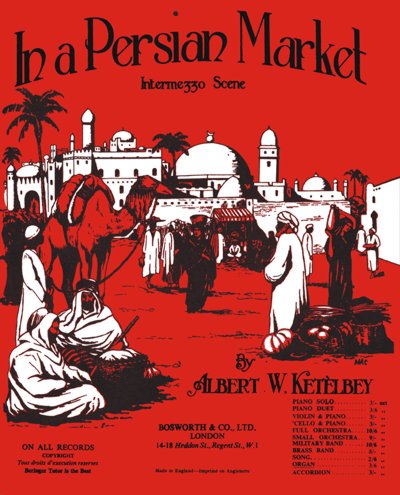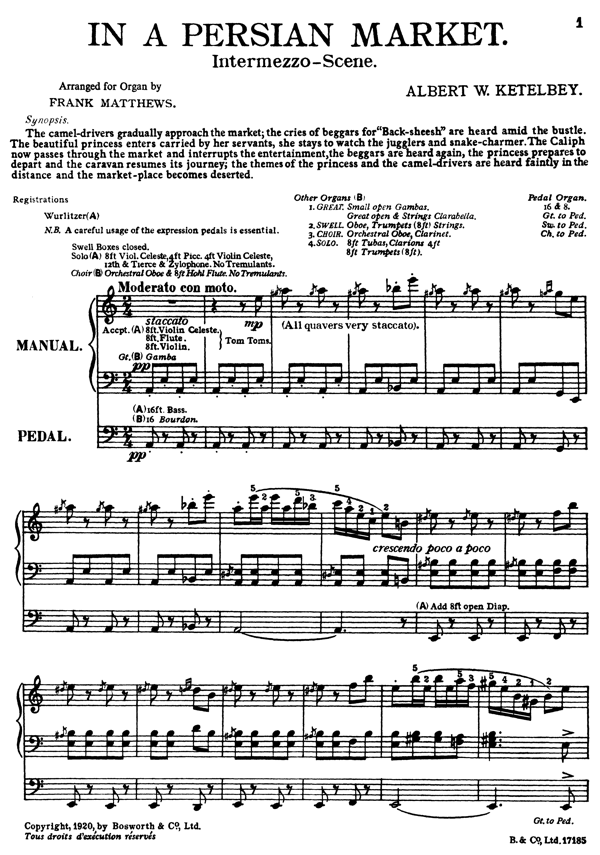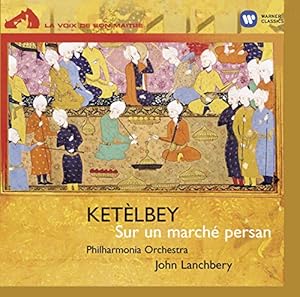He wrote popular, light pieces, many with titles linked to foreign lands. Note In a Chinese Temple Garden (1925), By the Blue Hawaiian Waters (1927), Italian Twilight (1931), With the Romanian Gipsies, Jungle Drums (Patrol), From a Japanese Screen, Algerian Scene, In the Camp of the Ancient Britons, Silver Cloud: An Indian Maiden's Song, The Vision of Fuji-San and In the Mystic Land of Egypt (1931).
One of his most enduring songs, and one which most of you...well, many of you, at least, if you're of a certain age...will recognize, is In a Persian Market, from 1920.
None of these songs, it goes almost without saying, has any real connection to its exotic setting (exotic to Britons, that is). This is orientalism and exoticism as expressed in early-middle twentieth century mood music for silent films, dinner parties, military bands, vaudeville, and the concert hall.
A very comprehensive article about Ketèlbey is found here.
Recording covers display various notions of what the music connotes:
This one sticks to genuine Persian imagery, but the band on the cover is not playing Ketèlbey:
The tribal people in the photo below would not recognize the music in the recording:
And here is In a Persian Market:







_-_001.jpg)

